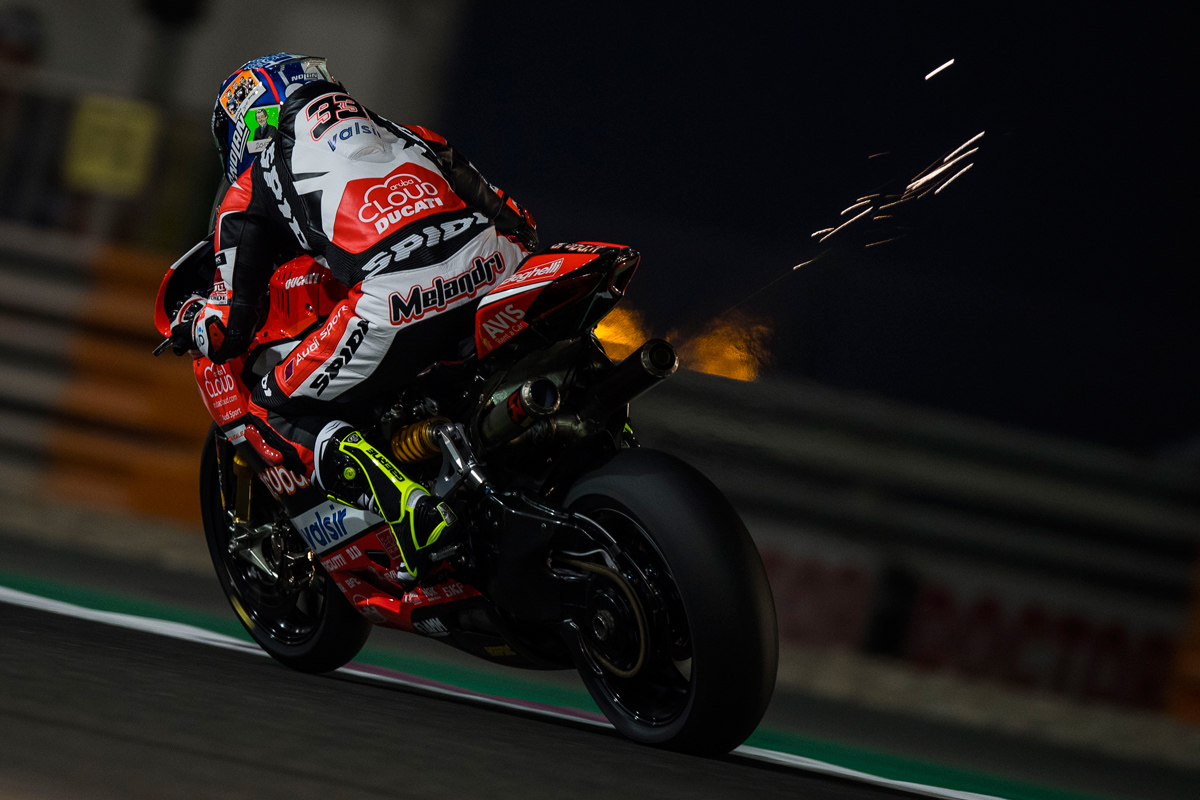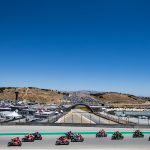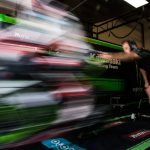I have to admit that I got a bit bored at the weekend.
It is partly symptomatic of the dull nature of the Losail circuit but ultimately the races at the weekend became a procession of the 2017 WorldSBK grid with little or no ‘action’ anywhere in the field. At least that was my view from trackside, and a very distant view at that.
Of all the places that I have visited during my time as a WorldSBK and MotoGP photographer I have to say Losail, and Doha generally, is my least favourite.
I recall in 2005 when we first went there I had, as always, a degree of excitement in a new adventure, a new race track and somewhere in the world I hadn’t been before. I also recall the sense of disappointment when I went around the track for the first time. It is a vast featureless series of corners with huge mountainous gravel traps (in some corners the gravel is piled so high that you can’t see the track from the service road) and the track is so far away from the service road that at some points you can get the whole field in the frame with a 600mm lens.

I also attended the first MotoGP race under the floodlights and again had a buzz about this new experience of shooting a race at night. Getting to bed just ahead of sunrise once everything has been edited and sent out each day has even taken the shine off that now.
The city of Doha itself is a continuously growing sea of steel, concrete and glass. In 2005 once you passed the golf course on the edge of the city there was nothing, absolutely nothing, just flat, hard packed, empty desert for the next 15km to the circuit. Now there are new ‘cities’ that more or less bridge that gap. There is a twelve lane highway that heads from Doha to Al Khor, just north of the circuit, and it is pretty much a continuous ribbon of enormous houses, apartment blocks, shopping malls and more construction sites the whole way.
As a city Doha wants to compete with Dubai and Abu Dhabi as the most affluent and glamorous location in the Middle East but to me it feels like they are spending money not because there is a need to but simply because they have the money to spend. It has become garish and distasteful, particularly when there is such a disparity in the socio-economic status of the native Qataris, the ex-pat community and the millions of unskilled migrant workers.
Sometimes the biggest and brightest is not always the best. Having watched the epic MotoGP race in Australia the week before I remembered that the WorldSBK race at Phillip Island at the start of the year was the same. Really exciting, fairing-bashing racing. As a way to close the WorldSBK season the races at Losail could not have been further removed and I think that is in a large part down to the circuit and it’s design.
For sure Jonathan Rea is in a class of his own but looking down the field, by lap four or five the entire field had strung out with bikes and riders basically doing timed laps on their own.

Maybe when a race is a bit dull we shouldn’t bemoan so much the performance of the riders and machines and consider the nature and design of the track they are racing at.
Over the weekend I also got involved in yet another Twitter ‘discussion’ about the state of affairs in initially the World Supersport championship but also WorldSBK. The common theme at the moment is that standardizing everything is the way forward. Could we not then just standardize track design as well? Let’s make every circuit in the world an exact replica of Phillip Island. Sorted!
The initial tenner of the Twitter conversation was that Supersport was a dead end for a rider’s career but quickly moved on to WorldSBK.
The fact that Cal Crutchlow and Chaz Davies were World Supersport champions and that Jonathan Rea, Eugene Laverty, Sam Lowes and Franco Morbidelli, to name a few, all came through Supersport racing showed a certain degree of ignorance and the discussion quickly descended into the ridiculous. It was suggested that because it was a production series it should be for middleweight naked bikes, including WorldSBK, as it was becoming too similar to MotoGP.
The Superbike World Championship started in 1998 as a race series for production based, 4 stroke machinery whilst Grand Prix racing was for prototype machinery and at the time the top class was run with 500cc two stoke bikes. In 2002 MotoGP, as it had then been re-branded, introduced 990cc 4-stroke machinery into Grand Prix racing whilst at the same time Maurizio and Paolo Flammini, who ran the Superbike championship, brought in Pirelli as a sole tyre supplier to howls of derision from the motorcycle media and MotoGP paddock.

The reason for the tyre change in WorldSBK was that Michelin had been lavishing huge amounts of resources on their two factory teams of Ducati and Castrol Honda and those teams using Dunlop and Pirelli rubber didn’t have a look in.
Fifteen years on and the irony is not lost on me. MotoGP has a single tyre supplier, more ironically, Michelin, and a standard ECU. The Moto2 class has the same engine supplied to all competitors, the same tyres and the same electronics. You can’t really get much closer to ‘stock’ racing than that. However, for some that is the way forward and the WorldSBK series is being derided for not following suit.
So yeah let’s have all the Twitter suggestions put in place. Lets have WorldSBK as naked bikes with panniers and tank bags; riders must wear tweeds and an open faced helmet; in race 2 you must carry a pillion passenger and have a mandatory stop during the race to collect a Chai Latte and Muffins from a pop-up Ace Café in the pit-lane. Oh and if we are only looking at it with UK tinted spectacles on, and we want to reflect the current trend in motorcycle sales, all riders must be aged over 40. Is that different enough?
P.S. I am now secretly hoping for a factory ride – Team MARIT (Middle-aged Racers in Tweed) on the new Kawasaki Z100RS. Wish me luck.
Photos by GeeBee Images








